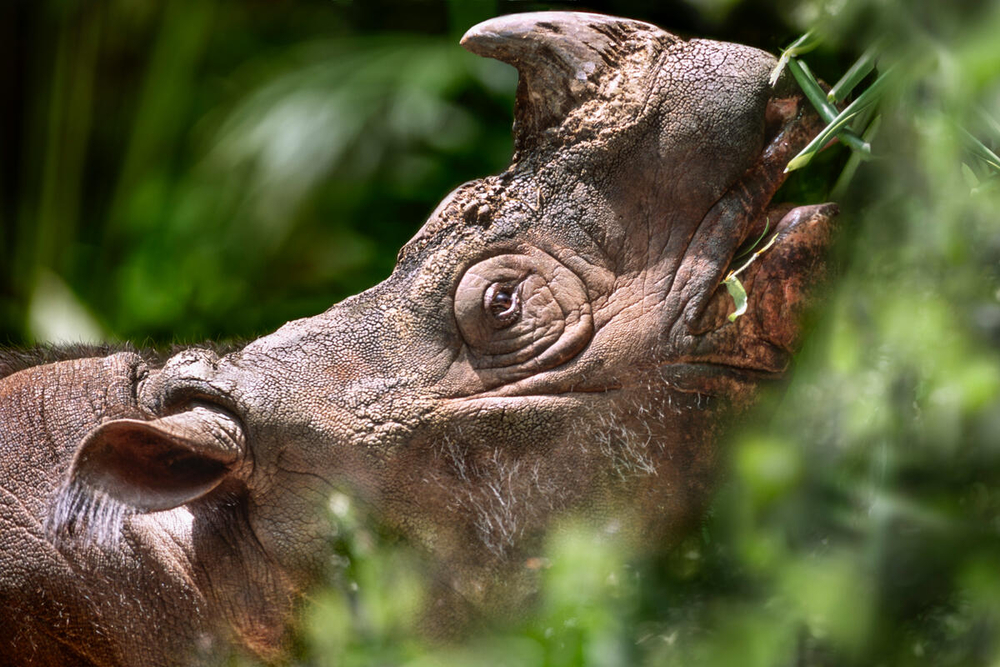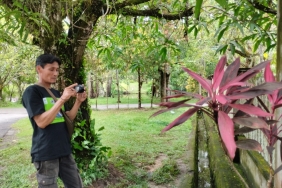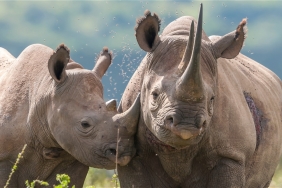SUMATRAN RHINO GET CRITICAL STATUS, SPECIAL TEAM FROM SUMATRA AND KALIMANTAN TRAINED TO FIND AND SAVE THEM
By: Joanita Anastasia
Representatives of 34 rhino survey teams from Aceh, Lampung and Kalimantan gathered on 14 -18 February 2019 at Way Kambas National Park, Lampung to receive Technical Guidance for Monitoring Trajectory Surveys (Tracking Rhino) in an effort Sumatran rhino rescue. The activity organized by the Ministry of Environment and Forestry (KLHK) together with Sumatran Rhino Rescue provided training for survey teams from YABI, WWF, WCS, ALERT, FKL, Way Kambas National Park Office, Bukit Barisan Selatan National Park Center, Park Center Gunung Leuser National, and East Kalimantan Natural Resources Conservation Center.
In this Technical Guidance activity, participants' understanding and skills in finding rhinos using the trajectory survey method will be improved. The trajectory method or method of tracking rhinos is used to confirm the presence of rhinos and the baseline of the natural environment to help determine their next steps. In addition, participants were also explained about the importance of efforts to save the Sumatran rhino as contained in the 2018-2021 Sumatran Rhinoceros Emergency Action Plan, government policies in terms of wildlife protection, and the ecology and behavior of the Sumatran rhino.
"It is hoped that through this training the team's ability to analyze signs of the presence of rhinos in their natural habitat will increase, both from natural signs and tracks," said drh. Indra Exploitasia, M.Sc., Director of Biodiversity Conservation (KKH), Directorate General of Natural Resources and Ecosystem Conservation (Ditjen KSDAE), Ministry of Environment and Forestry (KLHK), as the opening act. "When we know the exact number of rhinos and where they live, appropriate interventions can be carried out."
According to Subakir, Head of the Way Kambas National Park Agency, the Sumatran rhino must be rescued immediately because the current condition is very critical with less than 100 individuals. Habitat loss, hunting and low breeding rates are the main threats to the survival of this species. “Their condition is increasingly critical because their small numbers are scattered in various isolated locations, so that in some population pockets it is difficult to meet rhinos for mating. Then, coupled with their very special breeding behavior compared to other animals: female rhinos have a short fertile period and don't always want to mate even when they meet male rhinos," said Widodo S. Ramono, Executive Director of YABI.
As a response to the critical condition of the Sumatran rhino population and habitat in its natural habitat, an Emergency Action Plan (RAD) was prepared to save the Sumatran rhinoceros (Dicerorhinus sumatrensis) 2018-2021.
"One of the recommendations is to consolidate population pockets that number less than 15 individuals and separate them into larger population pockets within the rhino sanctuary, said Indra Exploitasia. "While in population pockets above 15, the focus will be on protecting the habitat."





